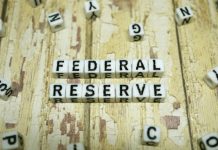Key insights from the week that was.
Following last week’s monetary policy announcements by the US FOMC and other major central banks, this week the spotlight turned to the RBA. The Board’s September meeting was predictably uneventful, with the cash rate unchanged at 4.35% and only incremental tweaks to their communication, which continues to emphasise labour market tightness and the need to bring aggregate demand and supply into balance. On the day, financial markets focused on the revelation that, in contrast to the prior policy meeting in August, this time the Board did not explicitly consider raising interest rates further. We see no reason to alter our view that the cash rate will remain unchanged until February, when we expect the first of four 25bp cuts through 2025.
This week’s new economic data, released after the RBA meeting, highlighted that the economy continues to make progress towards better balance between demand and supply. Indeed, the August CPI print showed a drop in headline inflation from 3.5%yr to 2.7%yr, in line with our expectations and the lowest since August 2021. The 17.6%yr drop in electricity prices, the steepest on record, reflecting rebates provided by the Commonwealth Energy Bill Relief Fund and state governments, was the main factor driving inflation lower. The RBA Governor suggested in Tuesday’s post-meeting press conference that policymakers will largely look through the fall owing to its temporary nature; however, the trimmed mean inflation measure, which excluded the electricity and auto fuel price declines, also eased from 3.8%yr to 3.4%yr, a new low for this inflation cycle. A more comprehensive picture of the developments in consumer prices will be available once the Q3 CPI data is released at the end of October. Our calculations suggest the August monthly figures are consistent with our existing 0.3%qtr and 0.7%qtr Q3 headline and trimmed mean CPI forecasts.
Meanwhile, the Q3 data on job vacancies, a good indicator of labour demand, showed that conditions in the jobs market continue to loosen. A 5.2% drop this quarter left the level of vacancies at 330k, more than 30% below the peak seen in May 2022 but still well above pre-pandemic norms (the long-run average is around 180k).
Public demand, productivity and the implications for inflation also received considerable attention in Westpac Economics’ analysis this week, and was brought together with the RBA view in Chief Economist Luci Ellis’ latest video update. Also of significance for the medium-term, the RBA’s latest Financial Stability Review was released.
Offshore, policy developments in China stole the show. Market participants have long wanted to see authorities in China make a stand over their growth ambitions and neutralise downside risks for the property market and consumption. This week’s announcements exceeded these hopes.
On Tuesday, the PBoC Governor Pan Gongsheng held a lengthy press conference to detail a comprehensive set of new and expanded monetary initiatives to support activity and sentiment across the economy. The 7-day reverse repurchase rate and the mortgage rate for existing borrowers were both cut, and guidance on forthcoming cuts to the loan prime rate and deposit rates given. The PBoC Governor also hinted at households being able to refinance with another lender if their current bank cannot accommodate the planned 50bp mortgage rate reduction for existing mortgages – the average loan rate for existing first-home borrowers is approximately 80bps higher than for new. More importantly, with respect to the quantum of credit in the economy, the reserve requirement ratio was cut by 50bps and a willingness to cut further into year-end shown. An injection of additional capital into the largest banks (who are state controlled and already have very healthy capital positions) was also flagged. Combined, these initiatives will materially increase available credit to all sectors. Also important for sentiment and the functioning of housing markets, second home buyers are being enticed to enter the market through a reduction in the minimum deposit from 25% to 15%. State-owned firms can also now borrow 100% of the principal needed to purchase unsold homes from the PBoC, up from 60% in May.
Also in focus for authorities is the state of the equity market. To aid a robust and sustained recovery in equities, the PBoC Governor announced at least USD70bn of ‘liquidity support’ for equity markets through a swap facility for participants – allowing less-liquid existing holdings to be swapped for high-quality liquid assets to back additional equity purchases. A re-lending facility will provide another circa USD40bn of liquidity to fund share buy-backs and additional cross-holdings. There was also reference to the potential establishment of a market stabilisation fund, while merger and acquisition activity is to be encouraged.
These initiatives are material and will be deployed with haste, but by themselves are more likely to strengthen and sustain a recovery than commence it. Rather it is the Politburo’s subsequent announcements which will act as the catalyst for recovery in the property market and consumption. Arguably of greater significance than the value of support mooted is official media’s reporting of the Politburo’s pledge to make the property market “stop declining”. This appears to apply to both investment activity and prices and comes in response to consumers’ mounting concerns over their wealth and the uncertain timing and quality of dwelling completion. Western media including Reuters and Bloomberg subsequently reported that backing this edict is 2 trillion yuan (circa US$280bn) of special sovereign bond issuance for late-2024 from the Ministry of Finance to fund stimulus targeting consumption and to alleviate the financial pressures of local governments. While late in the year, the combined weight of the monetary and fiscal measures announced and mooted is highly likely to lead to the 5.0% growth target for 2024 being achieved and should also see a similar outcome in 2025. Success thereafter will be determined by how the private sector, particularly the consumer, responds.
Over in the US, the calendar was relatively quiet, with the annual revisions to GDP the only release of material significance. From Q2 2020 through 2023, GDP is now estimated to have averaged 5.5% annualised, up from 5.1% in the initial estimates, with two-thirds of the revision reportedly the result of stronger consumption. For 2022 and 2023 respectively, growth is now estimated at 2.5% (from 1.9%) and 2.9% (from 2.5%).
As has happened a number of times in this cycle, Gross Domestic Income was revised up materially for 2023 and the first half of 2024. In Q2 2024 alone, annualised GDI growth has been revised up 2ppts to 3.4%; and, in 2023, growth is estimated at 1.7% versus 0.4%. These revisions have resulted in the household savings rate being lifted from 3.3% to 5.2%. All told, these revisions show the underlying strength of the US economy, the consumer in particular. But also, cross referenced against the consumer price outcomes of the past two years, the importance of the supply side for inflation. These outcomes will provide the FOMC with comfort over the underlying health of their economy as well as the sustainability of the return of annual inflation to target.












